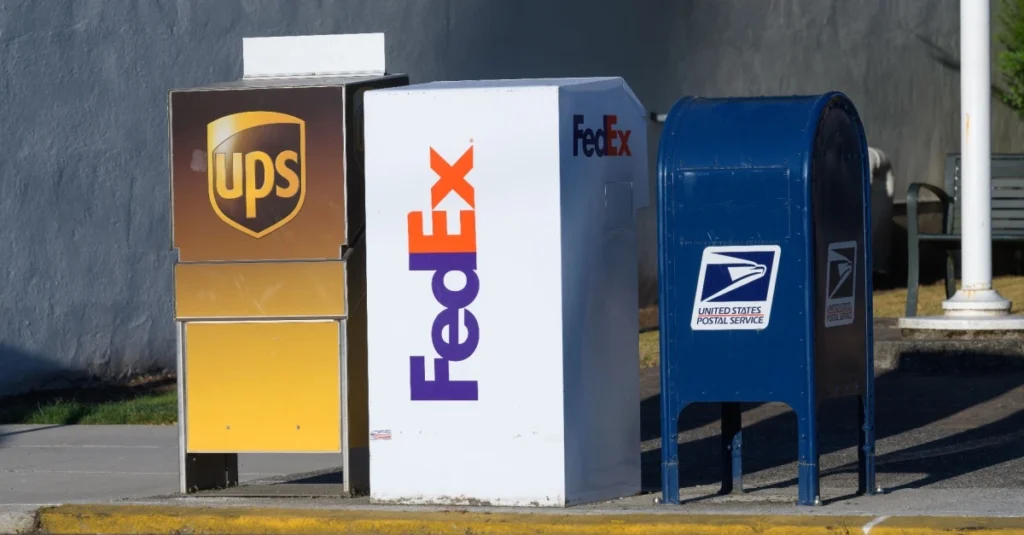What is Delivery Area Surcharge? How is it Calculated?
Delivery Area Surcharges
Delivery Area Surcharges (DAS) and Extended Delivery Area Surcharges (EDAS) apply to shipments in remote or high-cost areas, varying by carrier and location. These fluctuating fees can significantly impact ecommerce shipping costs. Partnering with a 3PL helps businesses compare rates, negotiate discounts, and find cost-effective shipping solutions, ultimately reducing expenses and improving efficiency.

Understanding and Managing Delivery Surcharges: A Key for Ecommerce Brands
For any ecommerce business, transportation costs can significantly impact the bottom line. As an ecommerce brand focused on delivering an exceptional customer experience, you’re likely to be constantly innovating and iterating on your products. But amidst these priorities, analyzing your shipping invoices often takes a backseat. Yet, overlooking shipping costs—especially surcharges—can lead to unnecessary expenses that eat into your profits.
While many ecommerce brands may assume that surcharges or additional shipping fees are static, they are anything but. These accessorial charges fluctuate based on various factors such as time of year, delivery zones, and the shipping carrier’s pricing policies. Being able to break down and understand how these surcharges are calculated is a crucial step in ensuring you’re getting the best deal for your brand.
What Are Delivery Area Surcharges (DAS) and Extended Delivery Area Surcharges (EDAS)?
One of the most common surcharges ecommerce businesses may encounter is the Delivery Area Surcharge (DAS). This fee is applied to deliveries or pickups outside a shipping carrier’s standard service area. Typically, it applies to remote, rural, or hard-to-reach areas. These surcharges help carriers offset the additional costs of serving these locations, such as more fuel consumption, longer delivery times, and additional labor costs.
While DAS is the most common, there are other sub-categories of surcharges that ecommerce brands need to be aware of:
- Extended Delivery Area Surcharge (EDAS): This surcharge applies to areas that are outside the primary delivery area but fall under a specific zip code classification.
- Remote Area Surcharge: This is usually applied to locations such as Alaska, Hawaii, and other locations with limited accessibility.
How is Delivery Area Surcharge Calculated?
While it might seem straightforward, DAS is not a fixed surcharge. The definition of what constitutes a “remote” or “delivery area” varies from carrier to carrier. A location that might be considered remote for one carrier may not be for another. This difference can have a significant impact on your shipping costs, especially if you’re frequently sending packages to remote areas.
For example, carriers like UPS and FedEx have different zip codes that qualify for DAS, and these may change from year to year. In fact, as of Q4 2021, about 17% of FedEx shipments and 11% of UPS shipments incurred a DAS charge. Out of approximately 41,600 zip codes in the United States, nearly 25,600 are subject to some form of DAS charge. DAS charges can range from as little as $4 to as high as $45, depending on the shipping service and the area.
When Are DAS Charges Applied?
DAS charges are not applied uniformly. The surcharge may be added only to certain services. For example, the fee applies to both express and ground services, as well as to 3-day and next-day delivery options, but the rate will differ based on the service chosen. For example, a UPS Air Commercial shipment may incur a surcharge of $3.55, while a FedEx Home Delivery shipment to an extended residential area could have a $32.50 surcharge.
Furthermore, it’s important to understand that DAS charges can change frequently. While carriers may not always publicize these changes, it’s crucial to stay in close contact with your carrier representatives to ensure you’re prepared for any potential increases in shipping fees.
How a Third-Party Logistics Provider (3PL) Can Help You Save on Shipping Costs
Shipping costs can account for up to 70% of an ecommerce business’s budget, so it’s essential to explore ways to reduce these expenses. One way to do this is by partnering with a 3PL provider. A 3PL with industry expertise can help you better navigate shipping rates, surcharges, and carrier services.
Working with a 3PL allows you to benefit from their rate-shopping capabilities. They’ll assess your shipping needs and compare different carrier services to find the most cost-effective solution for your products. Whether you’re shipping small, lightweight items or larger, bulkier parcels, they can match your shipping profile with the most suitable carrier, factoring in not just price but also delivery speed and efficiency.
Additionally, established 3PL providers often have strong relationships with carriers, which could help you unlock shipping discounts due to their high-volume shipping. A good 3PL partner will also keep you informed about any potential changes to surcharges or service rates, helping you avoid surprises when you receive your invoices.
Key Takeaways:
- DAS and EDAS are surcharges applied to deliveries outside of a carrier’s standard delivery area, often impacting rural or remote locations.
- DAS isn’t fixed—it’s subject to seasonal changes and varies between carriers, so comparing rates across providers is essential.
- Surcharges can differ based on the service chosen (e.g., ground vs. air) and the destination’s proximity.
- 3PL providers are valuable partners in helping you assess your shipping needs, choose the right carrier, and save on transportation costs.
If you’re feeling overwhelmed by high shipping costs, a 3PL can help you gain control over your logistics, analyze data for cost-saving opportunities, and find the best carrier and service options for your ecommerce business.
If you’re looking for a fulfillment partner to help you manage and optimize your shipping fees, reach out to Fulfillme for a customized quote. We offer a range of services designed to help ecommerce businesses grow, scale, and save money on shipping.
